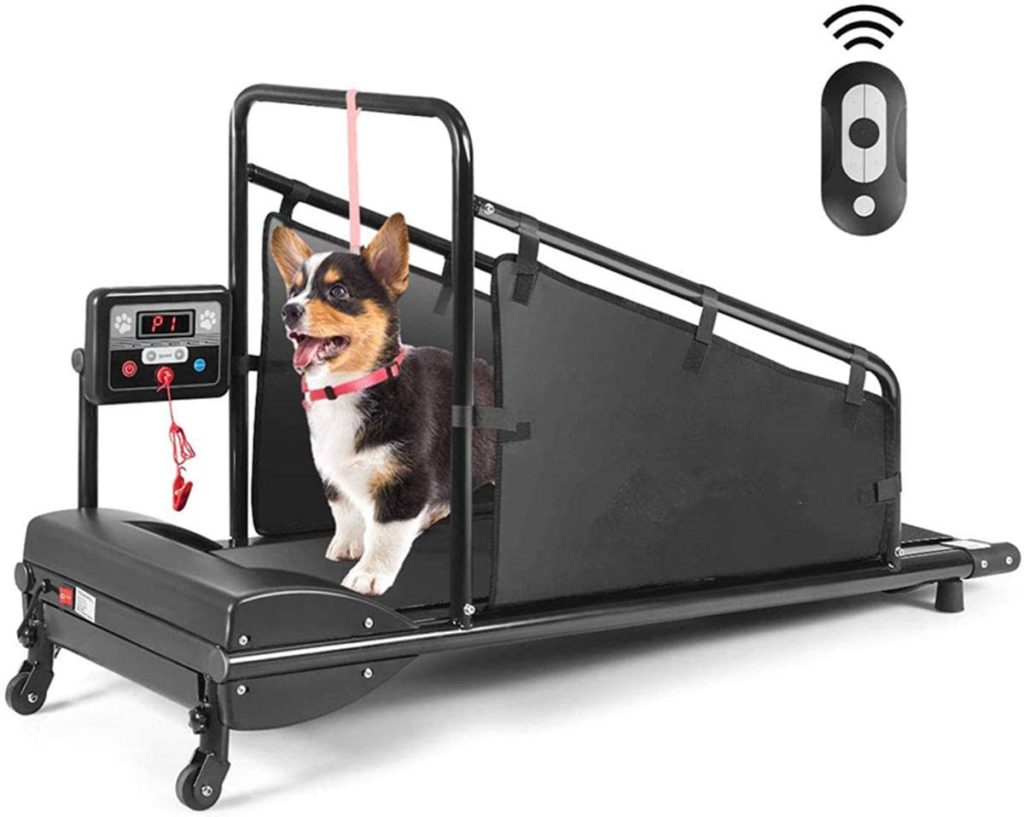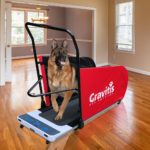The obvious joke to make here is the one about old dogs and new tricks.
There is no need for it though, is there? Especially as you can also teach your senior dog to walk on a treadmill. Granted, it may take more time, but older dogs need their workout too, and the treadmill can be an excellent way to keep them in shape and keep their joints active.
If you’ve recently purchased a treadmill for your dog (as we both know they aren’t supposed to use yours) and are now looking to train them to walk and run on it, dive right into our primer on the subject.
Let us just remind you of the key ingredients of dog training first: patience, consistency, perseverance and treats. PCPT, if you need an acronym to commit it to memory more easily.
And now, for the pup training!
Step 1: Set the Treadmill Up Properly
In order to ensure the absolute safety of your dog, first make sure that you have set the treadmill up correctly.
It will have come with an assembly instruction manual, so double check you have done everything right before you turn it on. Give the treadmill a test when your dog is not in the room (preferably when they are out of doors), and check that it’s working okay at all speeds.
Don’t set the treadmill up facing the wall. While this is fine for humans (in fact, my own treadmill provides nothing but a view of a very poorly painted wall), dogs will believe they are about to run into it, so they need to face a more open space.
Step 2: Take Some Basic Precautions
While you won’t actually have your dog start using the treadmill from day one, there are some universal precautions you need to remember.
- Never feed your dog right before a workout. This can lead to bloating or vomiting and will definitely not be a pleasant experience for your dog. Aim for at least an hour before or after a meal.
- Make sure they have plenty of fresh water readily available after each workout.
- Use a leash, but never leave your dog on the treadmill unattended. They can injure themselves quite seriously, and they may even choke themselves to death.
- Always have a warm up and a cool down period. Start and end the workout at a slower pace.
Step 3: Make the First Introduction
Just like you would expose your dog to a puppy, a cat or a baby, you need to take their introduction to the treadmill slowly too.
Start by allowing them into the room where the treadmill is located, with it turned off. If they walk in while the treadmill is running, they will most likely get a bit spooked.
Let them sniff around and get to know the machine for a few days. They may want to come back to it from time to time and check that it’s still there. You want them to get used to the treadmill’s existence.
You also want them to consider it a positive item. You can give them treats next to it, play near it, or praise and treat them if they climb up of their own accord.
Don’t be impatient or try to force them to do something they are not comfortable with - they will step on the treadmill in their own good time, not yours.
Step 4: Take the First Step
Ideally, you want your pup to walk on the treadmill while it’s still turned off. This won’t be too much of an issue in most cases, as a still and silent treadmill won’t be seen as too much of a threat.
Remember to provide positive reinforcements, of the kind your dog has been trained to respond to. Whether they are motivated by treats, praise or clicks, provide the same when they behave as they should around the treadmill.
You should also establish a command for hopping on it. “Get on” usually works well, especially if that’s what you use for climbing into cars. A completely new command will also work, of course.
If your dog is unsure about stepping onto the treadmill, try luring them on with a treat. Practice the process and command a couple of times a day, and once they are okay with climbing on board with each command, you are ready for the next step.
It’s important that you not only not let your impatience and frustration show, but that you don’t feel any in the first place. Dogs can sense your emotions, and if you are tense and stressed out while training them, they will mimic your emotions. This will naturally throw a spanner in any potential progress.
Step 5: And Another Step
Now is the time to turn the treadmill on for the first time. Set it to the lowest possible speed, and let them check it out as much as they want. You can repeat this exercise several times, even for several days, before you actually give them the command to get on.
Some dogs might step on the treadmill the first time they see it moving. If this happens, treat them instantly and reward their inquisitiveness.
They may be very reluctant though too, but you just need to keep trying, and reinforce any positive breakthrough with a treat or praise. Give them plenty of time to adjust, and let them take it at their own pace (pun not intended).
You may want to place your smaller dog on a moving treadmill, and get your larger dog to step on it while it’s turned off, setting it to the lowest speed once they are settled. Read the signs they are giving you to make sure you are not frightening them.
Step 6: Practice Makes Perfect
Once your dog is comfortable enough with walking on the treadmill in action, you can start doing some regular workouts.
Leash them first: hold it upwards as they step on, and then secure it to the treadmill. Turn the treadmill on when they have stepped onto it, and stick to the lowest speed. You can provide treats when needed, if you feel they are still a bit hesitant or unsure.
Start with short bursts: 30 to 60 seconds, until they are completely okay with jumping on and walking.
Also make sure your dog is walking naturally, and that they are not dragging their paws or trying to adjust to the movement of the treadmill. Try tinkering with the speed if you notice it’s too slow or fast for them. You are aiming for their usual walking pace. Definitely not running.
Step 7: Take Things Up a Notch
You can slowly start to build up both the speed, and the periods of time. You want to get to 30-ish minutes a day, if you are not walking your dog at all outside that day.
Remember that you can’t expect a dog that needs just an hour of exercise a day to both walk on the treadmill for 30 minutes, and then go for an hour and a half walk with you.
You should be able to read the signals your dog is sending you. When their eyes are larger than usual, when their lips are pulled back at the corners, when their tongue is hanging out and they are breathing more heavily, when their tail is between their legs: it might be time to end the workout.
Depending on the breed and health of your dog, you can do shorter or longer walks, joggs or even runs over time.
Step 8: Upkeep and Maintenance
Now that your dog is used to walking on their new treadmill, you need to make sure it remains in the best possible condition.
Clean it of all dog hair after each workout, and give it a regular wipe down, as the hair and dust can damage the belt and motor.
Depending on the manufacturer’s instructions, you may need to spray the bottom of the belt with a silicone or similar spray from time to time. Make sure you check what the maintenance requirements for your model are, and add a reminder to your calendar to stick to them.
If you are not using the treadmill for whatever reason, turn it on every once in a while just to get the motor running, and play around with different speeds to ensure everything is still in very much working order.
How to Train Your Dog to Use a Treadmill?
The Tail End
Now that you have the routine down, you can go right ahead and purchase a treadmill for your dog (if you haven’t already). It will ensure they get all the exercise they need, and will provide the perfect excuse for not venturing out in the sleet and rain.
On the other hand, you might also want to look into a treadmill for yourself. You can’t let the dog have all the fun, can you?






